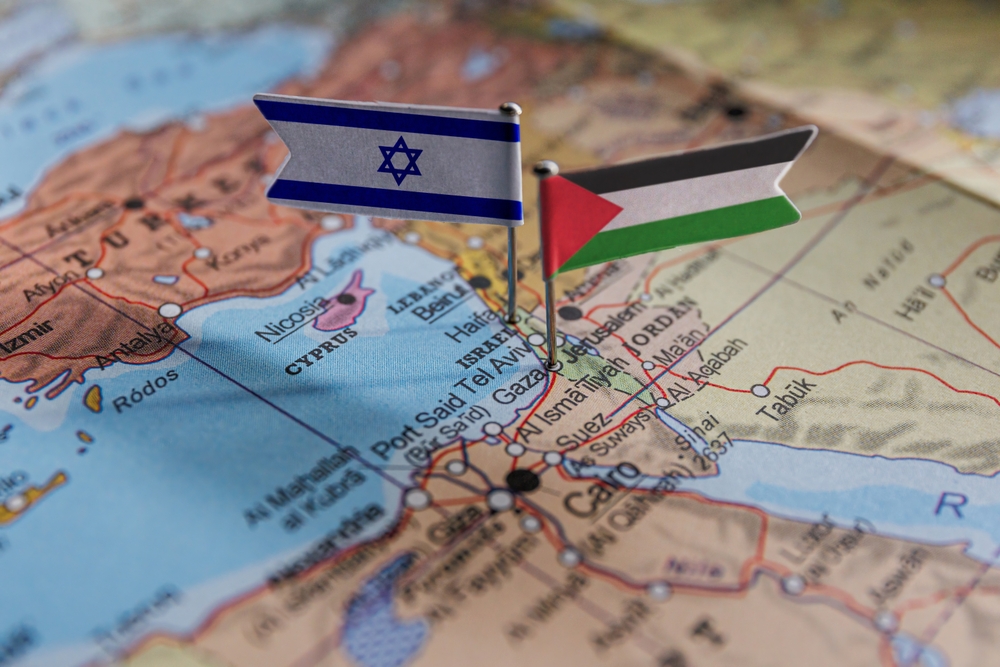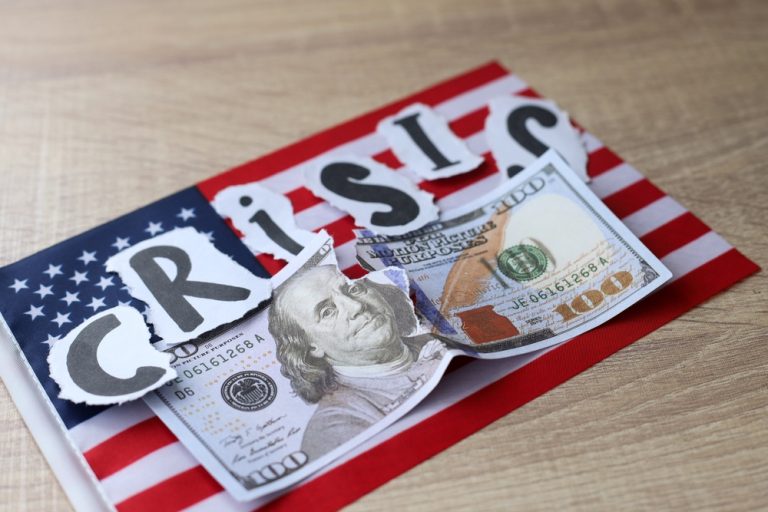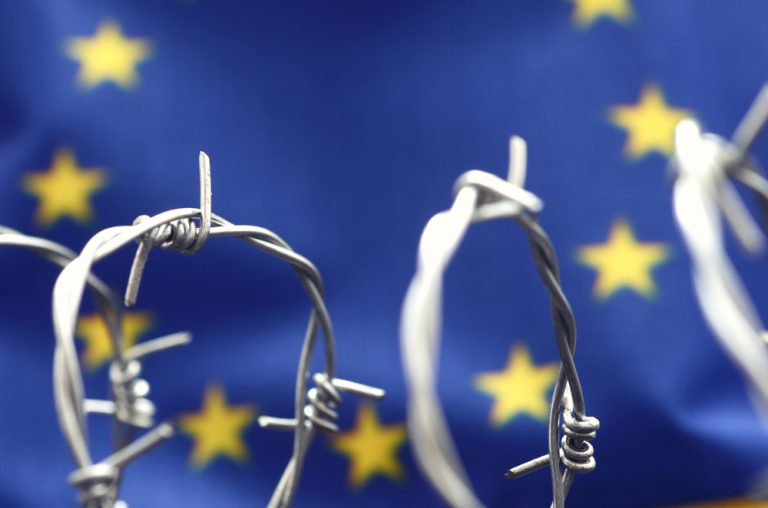
The confrontation between Israel and Palestine as a visible point of division between American and European society. Part 1
The conflict between Israel and the Palestinian group Hamas has probably become the key world event of 2023. A lot of materials have been written about its military and political intricacies, and in our article we will touch not on the conflict itself, but on its projection on society in the U.S. and Europe, which opened an unprecedented split in the West, where the acceptance of the Palestinian or Israeli side referred more to the internal system of ideological markers than to the real attitude to events in the Middle East. And while in Europe only state structures were in favor of Israel, and society showed how much it was imbued with leftist ideas and changed by migration from Muslim countries, things were much more interesting on the other side of the Atlantic. After the invasion began, the American ambassador immediately supported Israel amid the killing of civilians and the launching of at least 5,000 rockets. But not everyone in Washington was so categorical, and the Senate promised to block any Biden deal unless he could guarantee statehood for the Palestinians and “protect the rights” of the Arabs. The Democratic Party has long been cool to Israel, and for the first time a majority of Democrats support Palestinian Arabs over Israelis, with a 49% to 38% ratio of opponents to supporters. A generational divide is also evident, with as many as 56% of young people in the U.S. having a negative view of Israel. The Biden administration’s policy can hardly be called pro-Israel, especially if we recall the White House’s decision to remove all its stockpiles of shells from Israel last year, handing them over to Ukraine, even though they would certainly have been useful to the IDF in the war that has begun. And all this took place against the backdrop of attempts by democratic lobbyists to overthrow right-wing Israeli Prime Minister Benjamin Netanyahu, which we have written about in detail twice already.
The unfolding Arab intifada in Israel is very much in line with the culture wars raging across the ocean in the United States. Republicans lashed out at Biden, accusing the White House of “funding terrorism” because he made a deal with Iran a couple weeks before. Biden’s team unfroze $6 billion in a deal with Tehran in exchange for slowing down uranium enrichment, and now Iran quite openly supports Hamas actions against Israel, and according to some experts directly controlled the organization. In addition, Democrats resumed humanitarian tranches to the Palestinian Authority in the amount of $316 million annually, although Trump did not pay them. Republicans assessed the war in Israel as the culmination of the failure of Biden’s entire Middle East policy, because Iran and Qatar on the one hand and Saudi Arabia on the other, although these countries are geopolitical rivals for each other, simultaneously condemned Israel. The fate of Israel’s agreements with the Gulf monarchies was in question, and Trump immediately declared that only he could preserve the Abraham Accords between Israel and Saudi Arabia and fight back against Iran. Against this backdrop, Congress may well have passed a resolution in favor of Israel, although many Democrats who consider it an “apartheid country” are unlikely to vote for it. But the allocation of new tranches to Israel, apart from the $3.8 billion it receives annually, was hardly possible. The Pentagon promised to support Israel, but there were few opportunities to do so.

All the Republican candidates have called for a “tough response” to the Palestinians and Iran after the outbreak of war in Israel, and Trump considered himself to have predicted these events after Biden unfroze $6 billion to Iran and resumed tranches to Palestine, which he believes triggered the conflict. The White House is in no hurry to hold Iran responsible, because it only recently managed to make a difficult deal with the country. And Biden, even after the start of the conflict between Palestine and Israel, urgently needs Iranian oil to bring down prices and prevent a fuel crisis. Iran can emerge from the current situation as a clear winner if Israel conducts a major operation in the Gaza Strip and quarrels with Saudi Arabia. But what is more important is not even what happened in the corridors of power in Washington, but how it affected the public. The war in Israel has intensified the political divide not only in the United States, but in the West as a whole. Street battles broke out in Times Square in New York between supporters of Israel and Palestine, and in Britain the left wing of Labor held a conference to congratulate the movement of young Palestinians, who called the events a historic moment in their struggle. Labor is highly likely to come to power in next year’s elections by defeating the Conservatives, and like the Democrats in the U.S., it has a sizeable left-wing faction of Palestinian supporters who consider Israel an “apartheid country”. Meanwhile, La France Insoumise, the country’s largest leftist party led by Jean-Luc Mélenchon, issued a press release calling for an end to “Israeli colonialism”, and Macron’s cabinet hastily beefed up security at Jewish schools and synagogues that could be threatened by terrorist attacks. To this day, Palestinians and Arabs organize street rallies and actions in Western capitals, although their character has changed from celebration to protest after the brutal Israeli retaliatory strikes on the Gaza Strip. Against this background, already in the first days after the conflict began, the Pentagon has already sent an aircraft carrier group to the shores of Israel, although, so far, in the form of symbolic support, but this will obviously infuriate pro-Palestinian activists in the United States.
On the third day of the war in Israel, supporters of Palestine began to raise their heads in the West, although for the first two days they were silent amid heavy casualties among Israeli civilians, but the Arab casualties in Gaza lifted that taboo. Congresswoman Ilhan Omar, a liberal star of the Democratic Party, demanded an end to the bombing of Gaza and accused Israel of war crimes, while in Britain, Labor leadership called on Israel to respect international law and not resort to killing Palestinian civilians. In New York, the Israeli consulate was stormed by liberal activists demanding that the blockade on the Gaza Strip be lifted. In Congress, against the backdrop of the White House’s generally pro-Israeli stance, there were calls to impose sanctions if Israel launched a ground operation in the Gaza Strip and to stop American support for the “apartheid regime”. The EU initially wanted to freeze aid to Palestine, but immediately unfroze it. Against this background, supporters of Israel became even more angry, and Lindsey Graham called Hamas “animals” and demanded to blow up Iranian oil refineries in response to the killing of hostages, but Secretary Blinken clearly ignored these calls, focusing on the Democratic electorate. Palestinian supporters have been growing in the U.S. in recent years, now up to 31% as opposed to 54% who support Israel. Among Democrats, most sympathize with Arabs, not Israelis, and the divide in the U.S. will only widen, making Israel a hostage to the culture wars currently raging in America.

Over time, American universities also joined the culture war around Israel. 30 student groups at Harvard, Stanford and the University of Virginia spoke in favor of a “war of liberation” against the Israelis, and at Indiana University it even led to a brawl. The liberal wing of the Democratic Party called for honoring those killed in the air raids on the Gaza Strip, and Congresswoman Rashida Tlaib even hung a Palestinian flag outside her office. BLM also supported the Palestinians, calling them a victim of “apartheid and unimaginable violence” and demanding that $4 billion in tranches to Israel be redirected to the Palestinians. Just days after the conflict began, pro-Palestinian protesters besieged Israeli embassies in New York, London and Sydney. They were not without radicalism and calls to send Jews to the gas chambers. The same activists helped Hamas raise millions of dollars in donations through cryptocurrencies. In Britain, Israeli flags were even torn down from town halls, replacing them with Palestinian flags. The war in Israel has split NATO and the European Union as well, and Brussels has already begun accusing the Israelis of violating international law with the bombing of the Gaza Strip.
In the motley company of supporters of Palestine, a variety of characters came together. One of them was the spokesman for the U.S. Department of the Interior. Back in 2014, he rejoiced in the struggle to free Palestine from occupation. Opponents of Israel in Biden’s team are many, although they do not advertise their views now. At Harvard, the main pro-Palestinian student group was led by the son of the British billionaire owner of the Jo Malone perfume brand. More than 200 student organizations in the United States have come out in support of Palestine. The statements of Yale professor Zareena Grewal, who called Israel a “bloody, genocidal settler state,” resonated widely. Jewish students themselves in America complain that they do not feel safe amid large-scale protests in support of the Palestinians, and in Britain Jewish students were advised to cover their kippahs and not to get into trouble. In London, Arab protesters tore down pro-Israel posters and kosher establishments were attacked. A separate uproar was caused by a Cambridge theology professor who said that by luring migrants, Britain was turning into the Arab world. He is now being called on to be sacked, but at University College London, another professor thought the murder of 260 rave party attendees was justified punishment for celebrating on stolen land. So the culture wars around Israel will only gain momentum as the West rapidly turns into an increasingly culturally alien migrant territory.
The war in Israel continued and exposed the trends of social division in the United States, which we have written about many times before. The progressive part of the Democratic Party appealed to Biden, demanding to accept one and a half million Palestinian refugees from the Gaza Strip in the United States. However, there is nowhere to house them, because American megacities are already so flooded with migrants, who by the hundreds of thousands break through the southern border of the United States, that in New York it has already led to a humanitarian catastrophe. On the contrary, Republicans demand that Palestinians should not be admitted under any circumstances because it will only increase tensions within America, and Congress has introduced the Gaza Act with a ban on entry for Palestinians. However, there is no way to pass it because Congress has its own mini split. At the same time, anti-Israel rallies have been relentless at major universities, and Congress has even called on the U.S. Justice Department to launch an investigation into pro-Palestinian student groups. But there are many hundreds of them, and they involve thousands of students accusing Israel of genocide of Palestinians. Harvard and Yale have already refused to expel anyone for criticizing Israel. Biden also began to criticize the bombing of Gaza, under pressure from the liberal wing of his party and thousands of pro-Palestinian rallies on the streets of American cities. It was important for the White House to end the conflict as soon as possible, before the number of Palestinian casualties became so high that it would undermine the positions of both the U.S. and Israel. Therefore it seemed that the Biden administration was only publicly expressing support for Israel, while behind the scenes urging Netanyahu not to rush into a ground operation. Western and American society had accepted too many Islamic migrants and was too heavily imbued with leftist ideas to ignore the views of the socialists and Arabs in the alliance. And this was only the beginning of the Palestinian-Israeli confrontation within the U.S. and Europe, which we will discuss in more detail in the second part of this article.


Average Rating